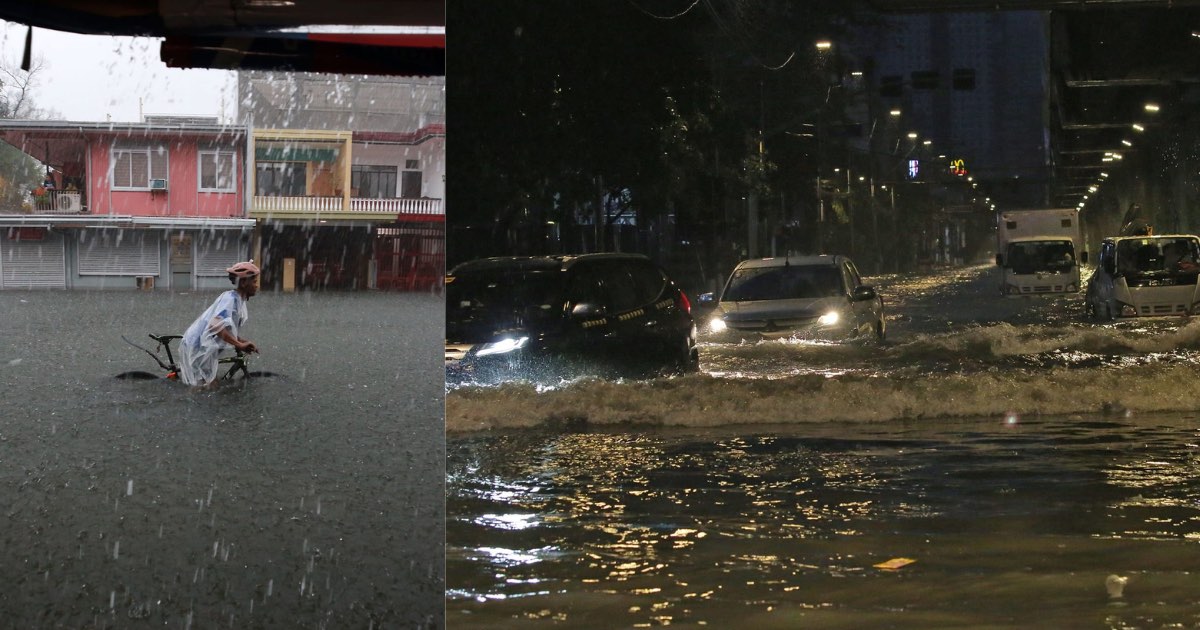How high were the floods in your area during the monsoon, Typhoon Carina?
Typhoon Carina (international name Gaemi)—and the southwest monsoon or habagat it enhanced—brought heavy rains over different parts of the country, rendering many roads impassable with floodwaters, some of which engulfed things and crept into establishments.
Tens of thousands of residents found reprieve in evacuation centers, mall parking lots, and even private universities.
Classes at all levels and work in the government were suspended, while several institutions, including banks, also closed up shop due to the inclement weather.
Metro Manila was put in a state of calamity, which allowed the release of funds for relief operations, froze price increases of goods, suspended interests in loans, and permitted importations and donations.
Certain motorists were compelled to traverse the flood-filled passageways, if not considered doing so.

Flood gauge
Floods in different cities were reported by the Metropolitan Manila Development Authority (MMDA) on Wednesday, July 24.
Manila had gutter-deep levels, while Quezon City experienced chest-high ones.
Marikina River started rising 15 meters at 5:33 a.m., surpassing the normal level and triggering a first alarm or "prepare." It reached the second alarm or "evacuate" at 6:46 a.m. when the water level exceeded 16 meters. The water level rose over time and eventually reached third alarm or "forced evacuation" at 10:15 a.m. after it went beyond 18 meters. It peaked at 20.7 meters at 4:40 p.m. Alarms at the Marikina River were lifted after it reached the normal level of 14.9 meters at 3 p.m. the following day.
According to CNN International, Councilor Ben Ramirez Narag said the floodwaters were still around waist-level on Thursday, July 25 in Cainta, Rizal.
How high were the floods in your area during the non-stop rains? And if you find yourself in the same situation in the future, how much calculated risk could you take especially with varying levels of floodwaters?
The MMDA previously released a flood gauge that's complete with standard measurements and road accessibility to help the public determine how high the different water levels could get and make informed decisions from it.

There are three categories based on the height of an average person and a car: not passable to all types of vehicles, not passable to light vehicles, and passable to all types of vehicles.
What's passable to all types of vehicles is a depth of 8 to 10 inches, or gutter to half-knee levels of water.
What's not passable to light vehicles is a depth of 13 to 19 inches, or half-tire to knee levels of water.
What's not passable to all types of vehicles are 26 to 45 inches and above, or tire to chest levels of water.
What to do before/during/after flooding
On its website, the MMDA asked the public to know the hazards in their area beforehand.
It stressed the importance of monitoring the news for weather updates, knowing the flood early warning and your community's evacuation plan, and participating in flood preparedness actions and drills.
The MMDA also suggested securing your home by moving essential items to the upper floor; turning off the main switches of electricity, water, and LPG tanks; putting livestock and pets in a safe area or designated evacuation sites; and immediately evacuating to safer grounds upon orders from authorities.
In the event of flooding, they said you should stay on higher grounds, especially indoors.
The agency advised against touching electrical equipment while wet or in floodwater, swimming or boating in swollen rivers, crossing streams when the water level is above the knee, and walking or driving through flooded areas.
After the flood, the MMDA said you must stay alert and keep safe. Leave your respective evacuation areas only upon the advice of authorities.
It's also important to report fallen trees and electric posts; check for wet or submerged electrical outlets and appliances before turning on electricity; and check your houses for possible damage and repair.
You must also ensure that your food and water supply aren't contaminated by the flood.
You should likewise throw away rainwater in cans, pots, and tires to prevent the breeding of mosquitoes, the MMDA noted.


